F loor coverings are an important part of decorating, and many savvy homeowners and interior designers know to select their area rugs and carpets before deciding on the other elements that transform a room into a harmonious space. Antique and vintage handmade rugs are some of the most beautiful, well-crafted and durable floor coverings one can own, and their use is not limited to traditional living rooms or dining rooms; rather, they can be used to add character to many unexpected areas of the home. Read on to learn about five out-of-the-ordinary ways to use handmade rugs to decorate your space.
Antique Rugs: An Ideal Base for Elegant Design
It’s easy to understand why rugs are so crucial to designing interiors: They exist as a foundation upon which to build a cohesive and balanced space. They add structure and direction, which helps the eye travel around a room in an intentional way, and create pathways for movement throughout a space. Rugs add color, texture and warmth, and act as an anchor to the furniture and décor that sit atop them.
Shop All Rugs
There is nothing quite comparable to the durability and unique beauty of handwoven or hand-knotted rugs from the great weaving traditions of the past. Whether you prefer the rich colors and elaborate patterning of antique Oriental rugs, or the Mid-Century Modern appeal of the famed Scandinavian workshops, or the unique abstraction found in vintage Moroccan rugs, there is ample design inspiration to be found across the weaving cultures of the world – and just as many design opportunities in your home in which to display these wonderful pieces.
1. The Kitchen: Add Warmth to the Heart of Your Home
The kitchen is often the room in a home where loved ones naturally gather. It’s the place where holiday meals are prepared, morning coffees are made, and conversations happen between friends and family over the familiar rituals of everyday life. It’s also a space where spills and messes tend to occur, so it’s essential that the floor covering you choose for the kitchen be durable and easy to clean.
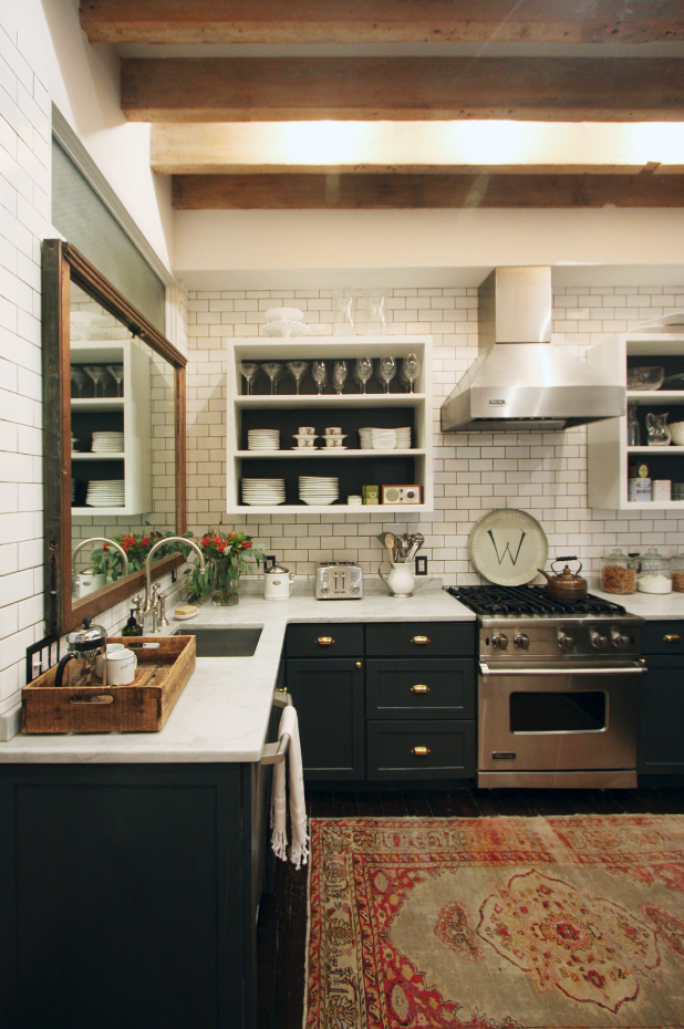
Wool rugs are remarkably easy to clean, making them an ideal solution for the kitchen floor, and a much more long-lasting solution than a typical kitchen mat. The moisture-wicking properties of hand-knotted wool rugs will keep your feet feeling dry even after minor spills and splashes, and the stain resistant quality of natural wool helps to keep these kitchen rugs looking great even through the wear of everyday life. These richly dyed pieces hide blemishes strikingly well, but if larger stains occur, they can be easily cleaned at home using a gentle natural cleanser and warm water.
This hand-knotted Genje rug from the Caucasus is an excellent size rug to place below your kitchen sink or counter. The soft wool pile will make standing for long periods much more comfortable, while the technicolor design provides camouflage for small spills in between cleanings. Standing on a wool rug instead of hard tile or wood floors is a wonderful anti-fatigue strategy in the kitchen, especially in areas where food preparation occurs, where we tend to stand for long periods of time.
Woven flat from quick-drying wool, this blue and gray kilim from the studio of famed Mid-Century Scandinavian designer Märta Måås-Fjetterström is an excellent choice to peek out from beneath a floating kitchen island or countertop. The undulating geometric design contains enough variations in color to hide small marks or stains, while the cool colorway keeps the piece from looking too busy. Flatweave rugs are easy to clean, since they have no pile for debris to become trapped in, making them a great choice for kitchens.
2. The Entryway: Set the Tone for Your Arriving Guests
The entryway to your home is the first area that welcomes you and your loved ones into your space. As such, it’s vital that the design of the area suits your personal style, and creates a sense of flow inward to the rest of your home. An accent sized or square rug is perfect for foyers and mud rooms, while a hallway runner is an ideal shape for a more narrow entrance.
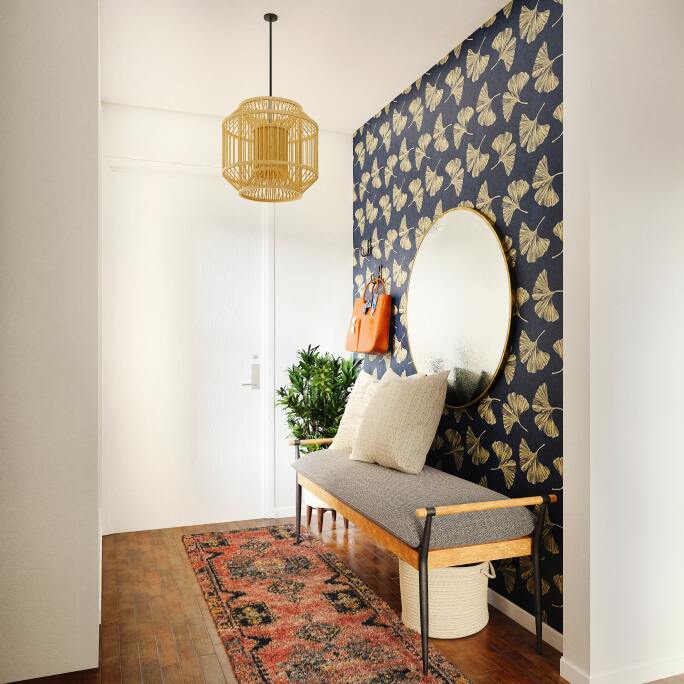
Oushak rugs, such as the late 19th century example below, are known for their large botanical motifs and allover patterning, instead of the smaller-scale motifs typical of other Oriental rugs. Turkish rugs tend to have no central symmetry, instead opting for allover patterning, causing the eye to travel across the entirety of the rug. This makes them an ideal choice for a larger entryway or foyer, since they invite the viewer to visually take in the space as a whole.
The larger motifs and lack of a central medallion also give antique Oushak rugs a more casual, less formal feel than rugs with more traditional symmetry. The sense of movement and playful color found in Turkish carpets makes them a joyful and inviting choice for larger entryways and foyers.
For more narrow entryways, a hallway runner is ideal. The above 3’6” x 9’4” Caucasian rug, which features a brightly colored geometric design in blue, red, green and ivory, draws guests into your home with its cheerful design. Each medallion is adorned with an eight-sided star motif, a symbol of good luck that will act as a positive omen for visitors. Knotted by hand, these antique rugs are made to last, and will stand up well to the wear of high-traffic areas.
3. On the Wall: A Prominent Display for True Works of Art
Antique rugs don’t necessarily need to be displayed on the floor. These finely woven creations are just as deserving of being displayed prominently on the wall. Similar to hanging tapestries, rugs not only add an element of pattern and color to your walls, but help insulate a space and also dampen sound, creating a warm and peaceful atmosphere. The tradition of rug weaving is an artform unlike any other, containing motifs imbued with rich histories and cultural significance. Displaying these pieces on the walls of your home adds a romantic and worldly touch to your chosen space.
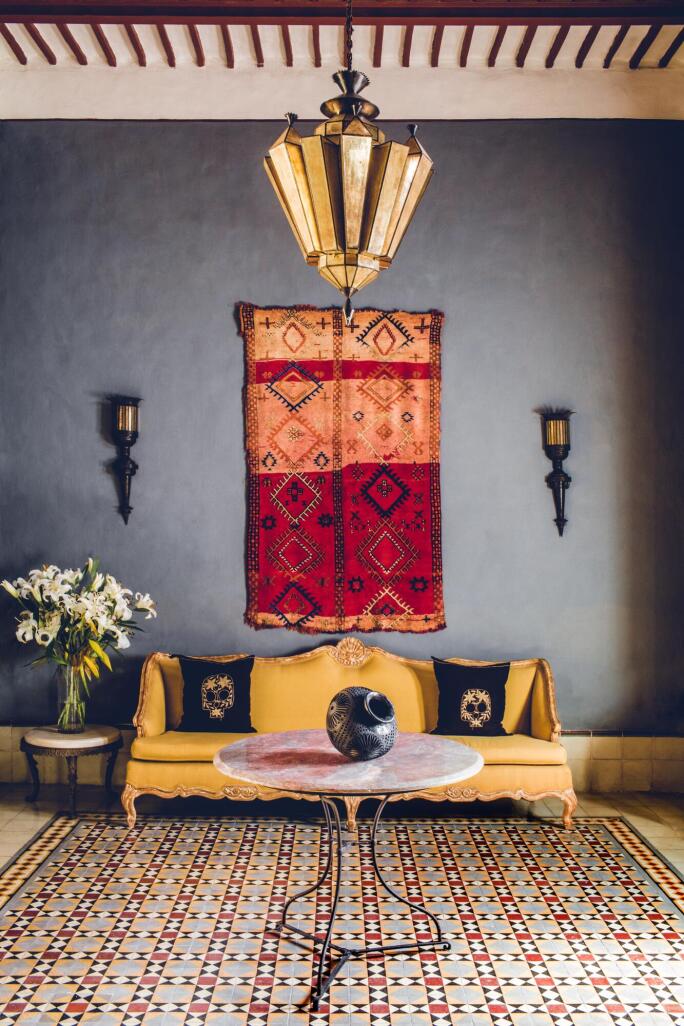
The tradition of hanging textiles on the wall goes back hundreds of years, and is an ideal way to display antique and vintage rugs in their full glory. Rugs depicting hunting scenes, such as the Persian Malayer rug below, are traditionally some of the most sought-after designs, and an excellent choice for a wall hanging. The multitude of animals found on this rug, such as cheetahs, peacocks, lions, horses, deer and dogs, symbolize the wealth and prosperity of their owner, and create a dynamic scene worthy of vertical display.
Modern art lovers can also find many intriguing rug designs to hang on their walls. This geometric Turkish piece, with its concentric, multicolor square design, is reminiscent of the modern art of the 20th century. The high shag-length pile adds a playful texture to the rug, beckoning the viewer to come closer and feel.
4. The Bath: A Luxurious Experience Underfoot
For a truly luxurious experience, upgrade your bath mat to a vintage runner. Perfectly suited for below the vanity or alongside the bathtub, these durable rugs made from soft natural wool will add an indulgent touch to your home spa.
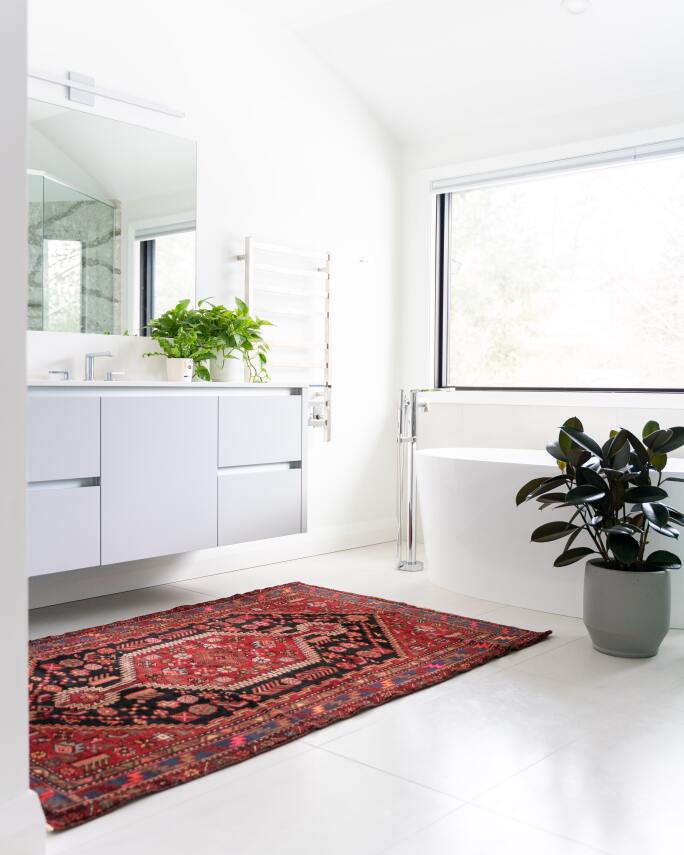
Wool is known for being a hardy fiber that has the ability to soak up large amounts of moisture, making these hand-knotted rugs perfectly suited for use in your private bath, or even your laundry room. Whether you choose a runner rug or an accent mat, these absorbent and quick-drying works of art will add both form and function to your bathroom.
Because the bathroom is often a place where one can expect to be barefoot frequently, a rug with a sumptuous high pile can be an extra-luxurious option. The above vintage Moroccan runner is knotted with a shag-length pile, giving it additional cushioning underfoot. The rosy colors and geometric patterning give it a warm yet modern feel, which would work well with a variety of bathroom designs. At 3’11” x 7’7”, this rug would be perfect in front of a double sink vanity.
For a more classic look, this hand-knotted rug from East Turkestan is an excellent choice. Knotted from light aubergine and sage green wool with traditional medallions and botanical motifs, this rug has a low pile which will dry rapidly if splashed on. The neutral color scheme pairs well with a variety of bathroom designs, and its 3’6” x 6’ dimensions make it the ideal size for next to a bathtub.
5. The Stairs: Lead Upwards in Style
Carpeting on stairways not only adds a measure of safety to prevent slips and falls, but also presents a wonderful opportunity to add another element of color and texture to your home. Natural fibers like jute, sisal, and wool provide enough texture for traction underfoot, and long runner rugs are the perfect shape for stairway carpeting. Antique hand-knotted rugs are some of the most resilient carpets on earth, making them ideal for these high-traffic areas.
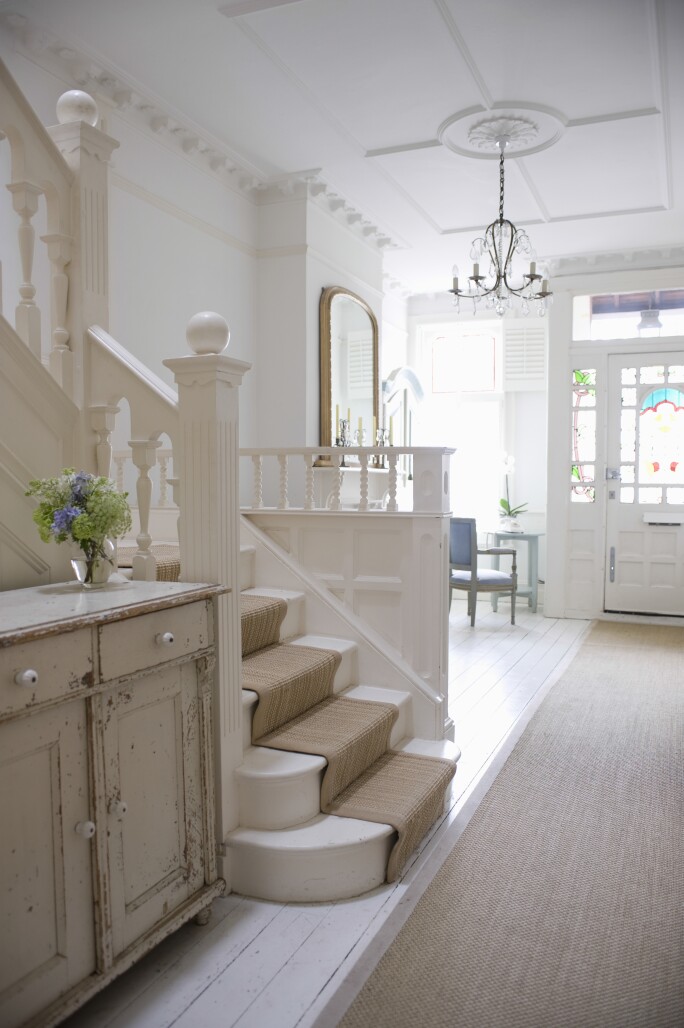
This antique Swedish runner, handmade in the late 19th century, is an excellent choice for a stairwell rug. Containing folkloric symbols and floral motifs set in multicolor stripes, the rug’s playful design will add a modern pop of color to your staircase, while the flatweave construction makes vacuuming and cleaning a breeze.
Higher-pile rugs can also work wonderfully on staircases. This Moroccan example takes a minimalist approach, with ivory knotted stripes interspersed with blue, lavender, gold and crimson accents. The abstract design of this piece would be wonderfully displayed on a shorter set of stairs.
Wherever you choose to include an antique rug or vintage carpet in your home, the space will instantly feel warmer and more inviting. These handmade pieces bring with them a sense of history and craftsmanship unparalleled by contemporary rugs, and each piece is guaranteed to be one of a kind. Shop the collection of antique and vintage rugs from around the world today.























